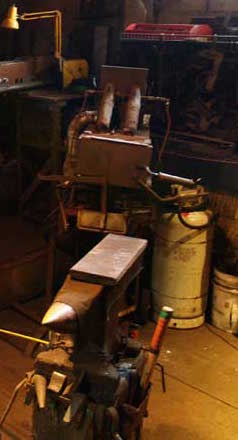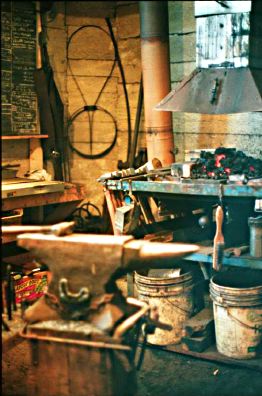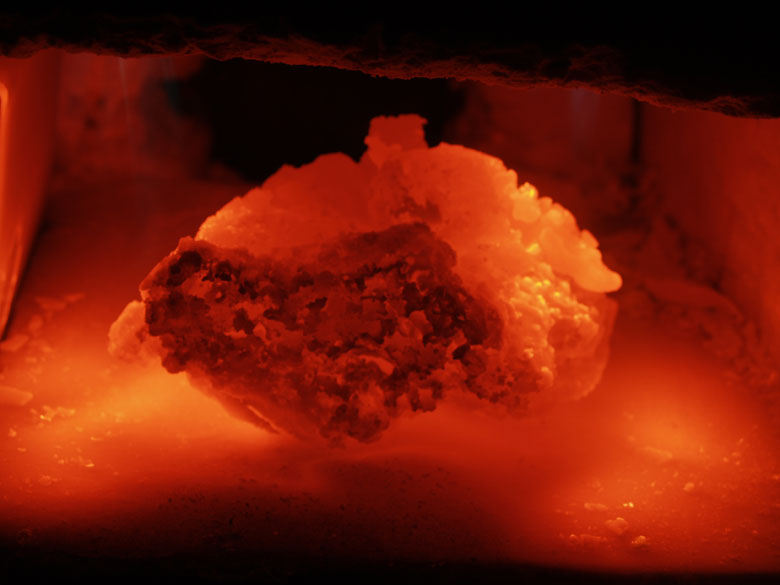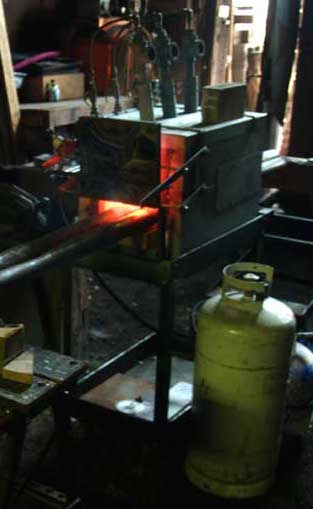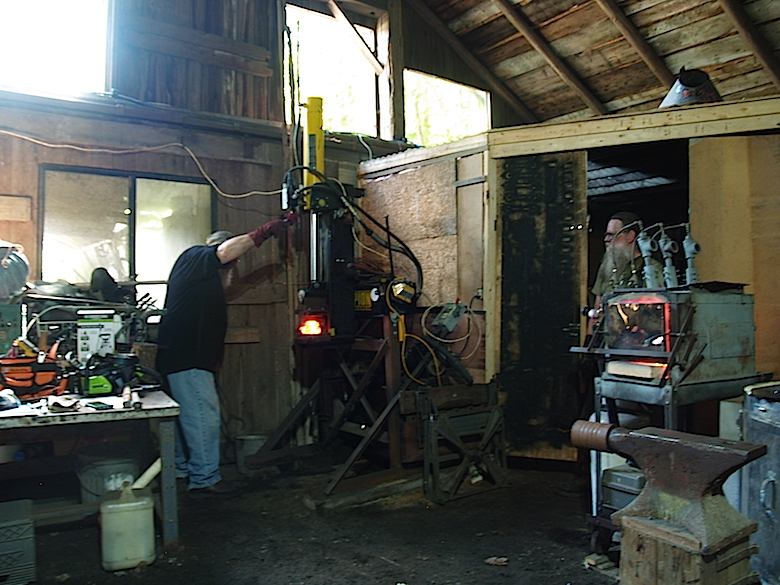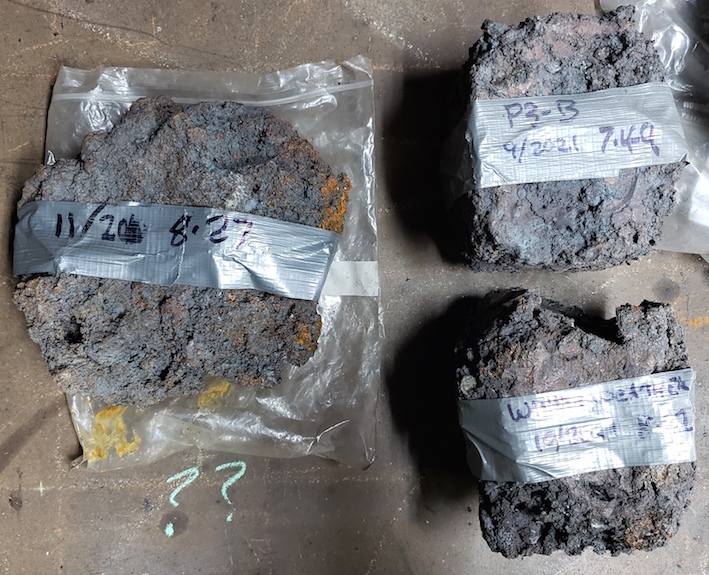Of the ten available larger blooms, four were
selected for that day's effort (in order of working) :
The forming was undertaken through use of the 30
ton (actually 3000 psi)
hydraulic
press, using flat plate dies for compression, Typically
there would be a number of cycles, attempting to re-shape the
irregular blooms into a roughly flat sized 'brick' shape. One of
the aspects of this press (mainly due to the long shaft and guide
structure) is that it exerts a bit more pressure on one side
(towards the frame) than the other, resulting in a slightly
distorted compression. Several heats were required for each bloom.
The final steps were using a cutting blade to render into smaller
pieces.
Illustrating a working sequence
Images by Neil Peterson
